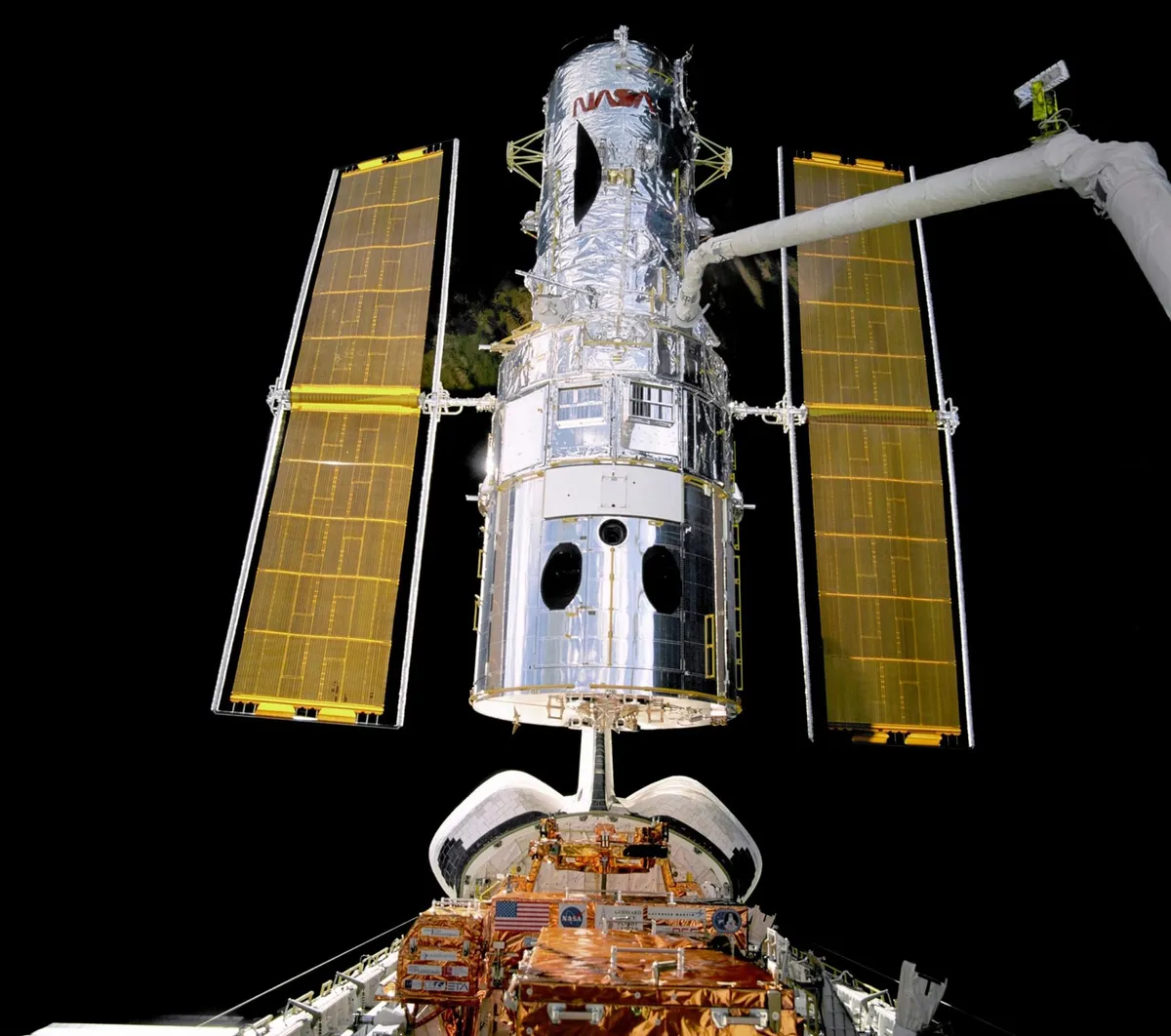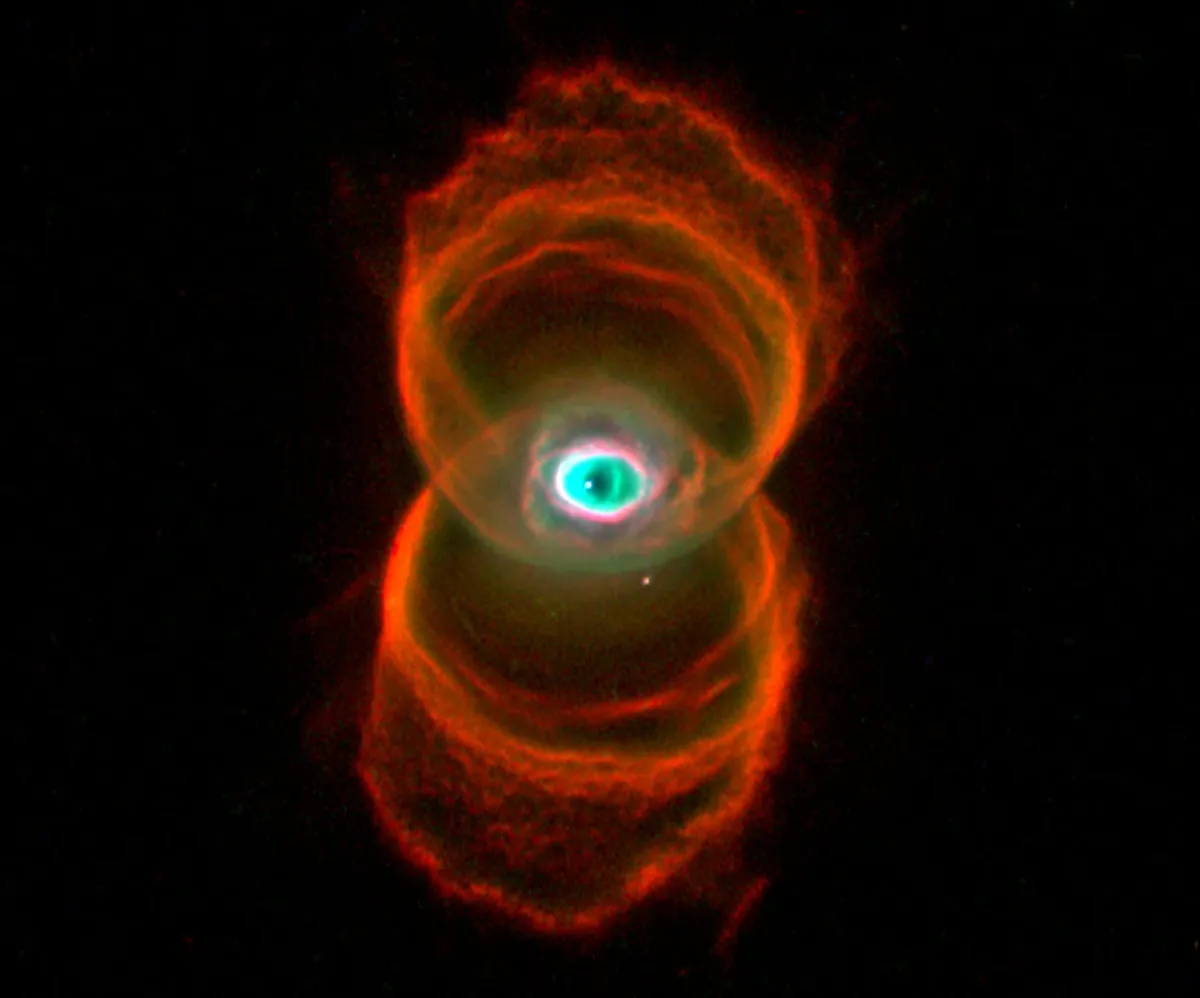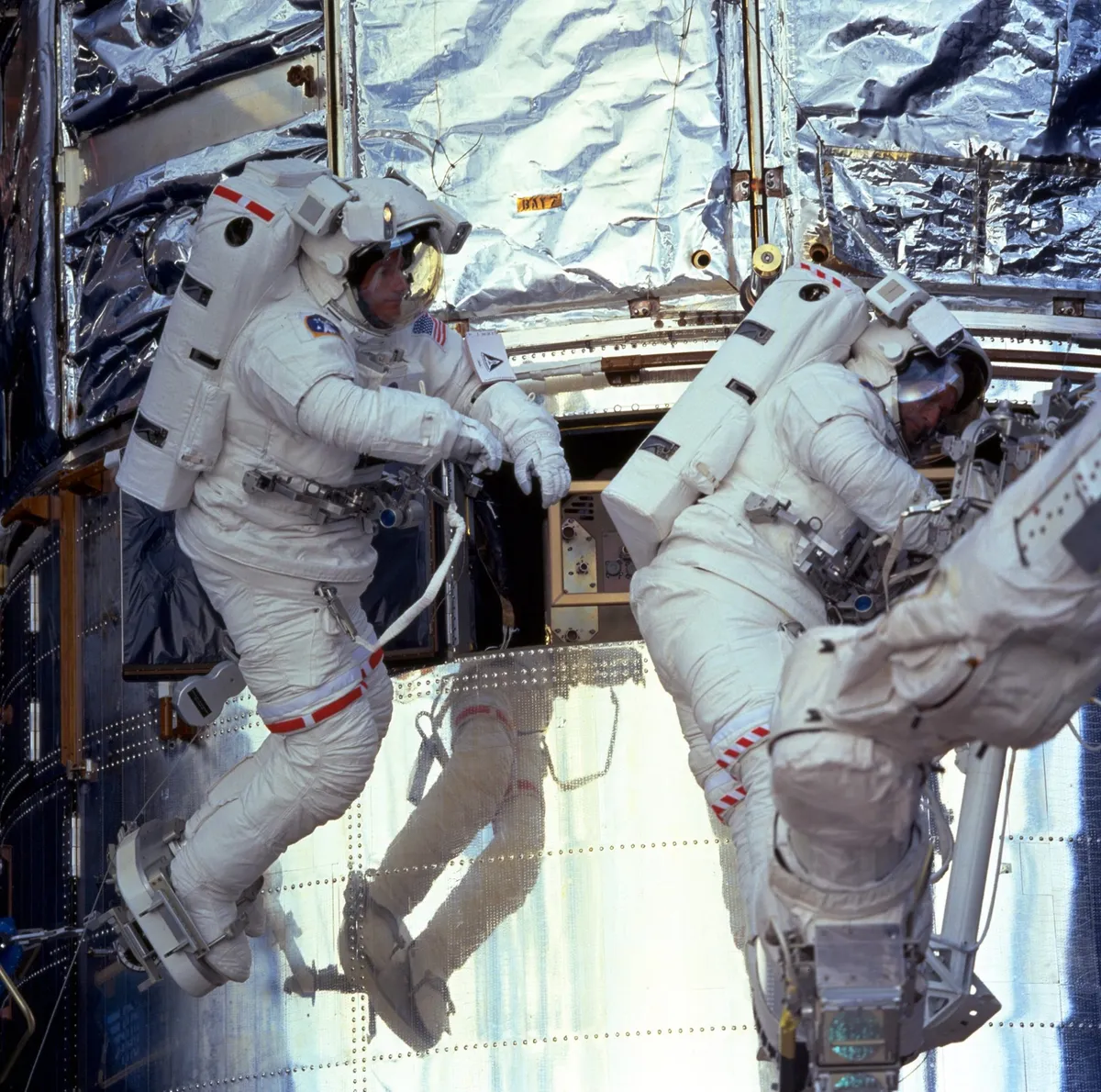From its launch in 1990 to the departure of its last servicing crew in 2009, 32 astronauts worked on Hubble servicing missions. One of them, self-confessed ‘Hubble Hugger’ John Grunsfeld, visited three times.
They performed a total of 23 spacewalks totalling 166 hours to replace solar arrays, add scientific equipment and fit new computers and power control units.
They fixed Hubble’s notoriously failure-prone gyroscopes, patched its cracked and crumbling insulation and undertook intricate surgery to bring two instruments back from the dead.
Read more about Hubble's history:
- 'How we serviced Hubble': Mike Massimino reveals all
- Former astronaut Kathryn Sullivan on the mission to launch Hubble
- How the Hubble Space Telescope is used to study exoplanets
Those who serviced Hubble were held in high esteem by those who did not; astronaut Bob Curbeam, who never visited the telescope, was so impressed with their coolness that he called them simply ‘the Jedi’.
If the first servicing mission STS-61's crew brought Hubble back from the brink, then the four Space Shuttle missions that followed turned it into a powerfully capable observatory for the new millennium.
They transformed it in the eyes of the public, enabling it to seize hearts and minds as never before.

“It’s Americana,” said Hubble spacewalker Rick Linnehan, “like cheeseburgers and Clint Eastwood.”
Even the US rock band Pearl Jam used a Hubble image of the Hourglass Nebula on the cover of their 2000 album, Binaural.
When the STS-82 astronauts arrived in February 1997, their opening spacewalk was nicknamed ‘Superbowl’ by program scientist Ed Weiler.
It required the crew to pull out two original instruments – the GHRS, which had succumbed to an electrical failure, and the FOS – and replace them with the Space Telescope Imaging Spectrograph (STIS) from NASA’s Goddard Space Flight Center in Maryland and the University of Arizona’s Near-Infrared Camera and Multi-Object Spectrometer (NICMOS).
Spacewalkers made critical repairs and swapped the telescope’s vintage-1970s computer for a new model, 20 times faster and boasting six times more memory.
The former would provide spectroscopy of planetary atmospheres, stellar nebulae and the relationship between black holes and their host galaxies at ultraviolet, visible and near-infrared wavelengths.
STIS could gather 30 times more spectral data and 500 times more spatial data than previously possible.
But the infrared spectrometer, coronagraph and polarimeter that was NICMOS seemed oddly incongruous, since Hubble operated at ambient temperatures totally unsuited to heat-sensitive optics.

The instrument carried a flask of nitrogen ice to cool its sensors and enable them to study exotic objects like brown dwarfs – bigger than planets, smaller than stars – which emit their radiation most strongly in the infrared.
Both more than proved their worth. STIS surveyed multiple galaxies, observed a debris disk around the star Beta Pictoris, and observed atmospheric sodium and huge quantities of hydrogen, carbon and oxygen around the exoplanet HD 209458b.
Closer to home, NICMOS detected an impact crater on the asteroid Vesta and its data allowed spectroscopic measurement to be made of several exoplanets.
Sadly, neither was immune to technical troubles. STIS suffered a power supply failure in 2004, but was repaired by the STS-125 crew on the final Hubble visit in May 2009.
And although STIS remains fully functional today, NICMOS was less fortunate. An electrical short caused its coolant to run out in 1999.
A cryocooler was fitted by the STS-109 astronauts in March 2002 and ran smoothly for six years, until complications from a software upload and a cryogenic blockage knocked it permanently out of service.
At one stage, a 6-spacewalk mission to include the removal of the last original Hubble instrument – Europe’s FOC – and installation of the multi-channel Advanced Camera for Surveys (ACS) was set for mid-2000.
But several gyroscope failures obliged NASA to fly an earlier-than-planned servicing call on STS-103 in December 1999.

Its spacewalkers made critical repairs and swapped the telescope’s vintage-1970s computer for a new model, 20 times faster and boasting six times more memory.
The ACS was finally fitted on the STS-109 mission. Built by NASA-Goddard and Johns Hopkins University, it gave Hubble a wide-field survey capability from visible to near-infrared and an imaging capability from near-ultraviolet to near-infrared.
It has observed the most distant known quasars, found a dozen exoplanets in the Milky Way’s central ‘bulge’ and undertaken several ultra-deep-field sky surveys.
Yet it too fell foul to electrical failures in 2006-2007. Although its wide-field channel was repaired on STS-125, the high-resolution channel of ACS remains out of action.
And with the final servicing mission came Hubble’s final instruments. NASA-Goddard’s Wide Field Camera 3 (WFC 3) took the place of WFPC 2 to provide a far wider field of view than NICMOS.
To commemorate the telescope’s 25th anniversary in 2015, it acquired a higher-resolution view of the famous Pillars of Creation image, which was taken by Hubble in 1995 of the vast ‘elephant trunks’ of gas and dust in the Eagle Nebula.
Since each of the newer instruments has built-in corrective optics, COSTAR was now obsolete and was removed to make way for the University of Colorado at Boulder’s Cosmic Origins Spectrograph (COS).

This has focused on the origin of large-scale structures in the Universe, the formation of galaxies and the evolution of stellar and planetary systems.
But scientific instruments form only part of Hubble’s story. Maintaining its infrastructure has been vital and technological advancements have afforded a comparatively smooth decade of service since the departure of STS-125.
Rigid solar arrays – heavier, admittedly, but also one-third smaller and producing 20% greater power – replaced the wobbly original ones.
They allowed all of Hubble’s instruments to run simultaneously. A new power control unit helped eliminate the critical failures sustained in previous years.
Looking to the future, as Hubble has transitioned from vintage-1970s technology to modernised solid-state electronics, this enhanced reliability should ensure its continued survival throughout this decade and beyond.
Ben Evans is a space writer and author. This interview originally appeared in Hubble: 30 Years of Discovery, a new special edition magazine available now.